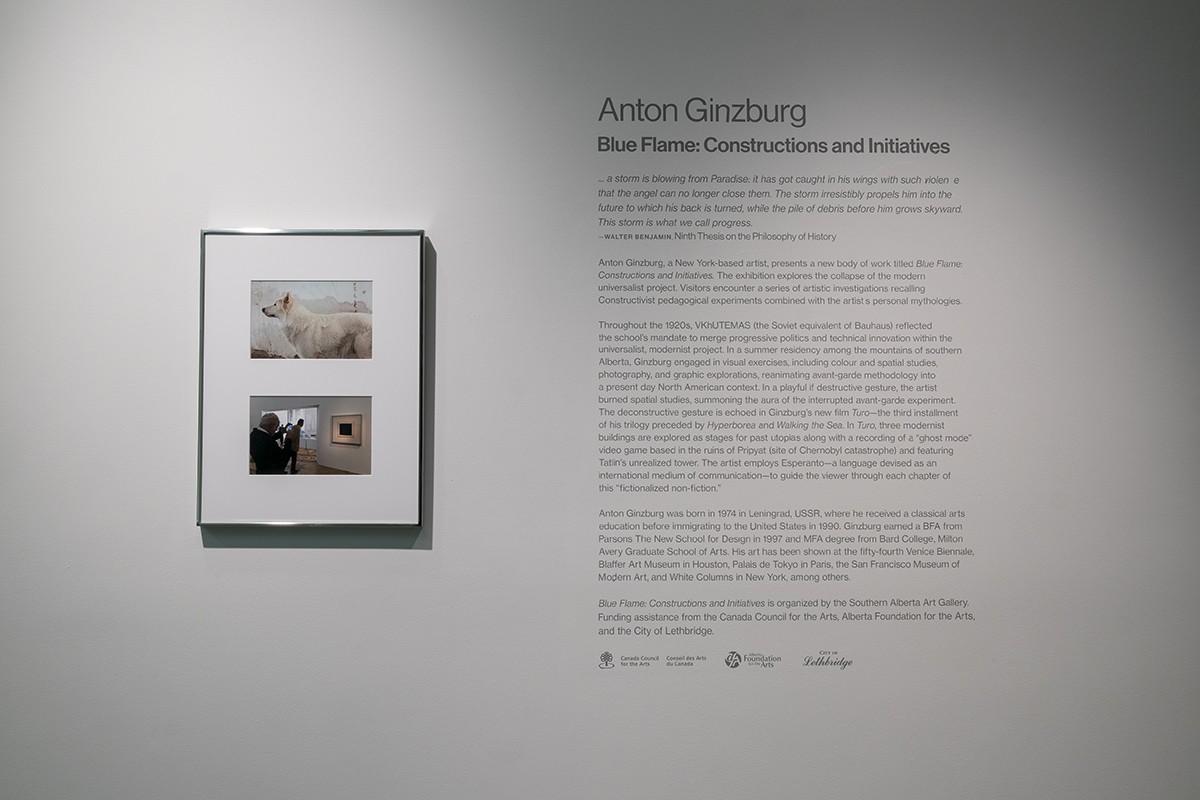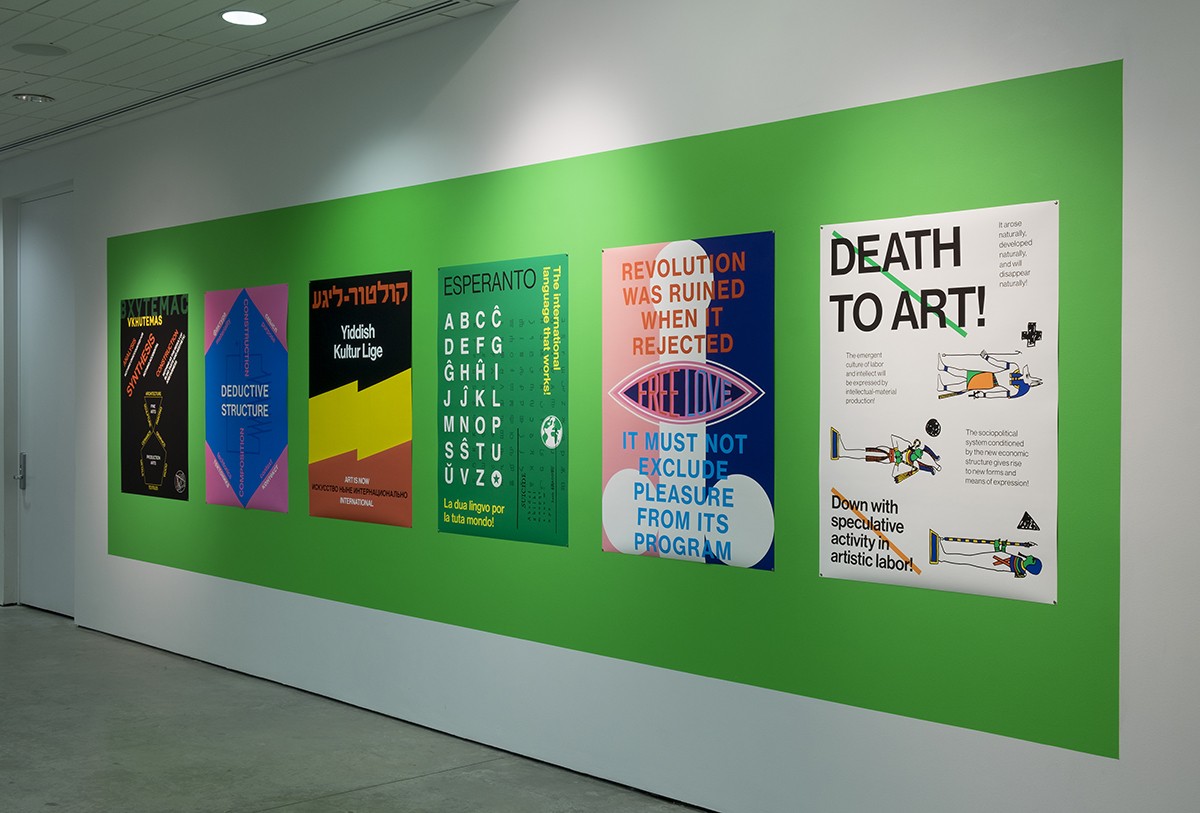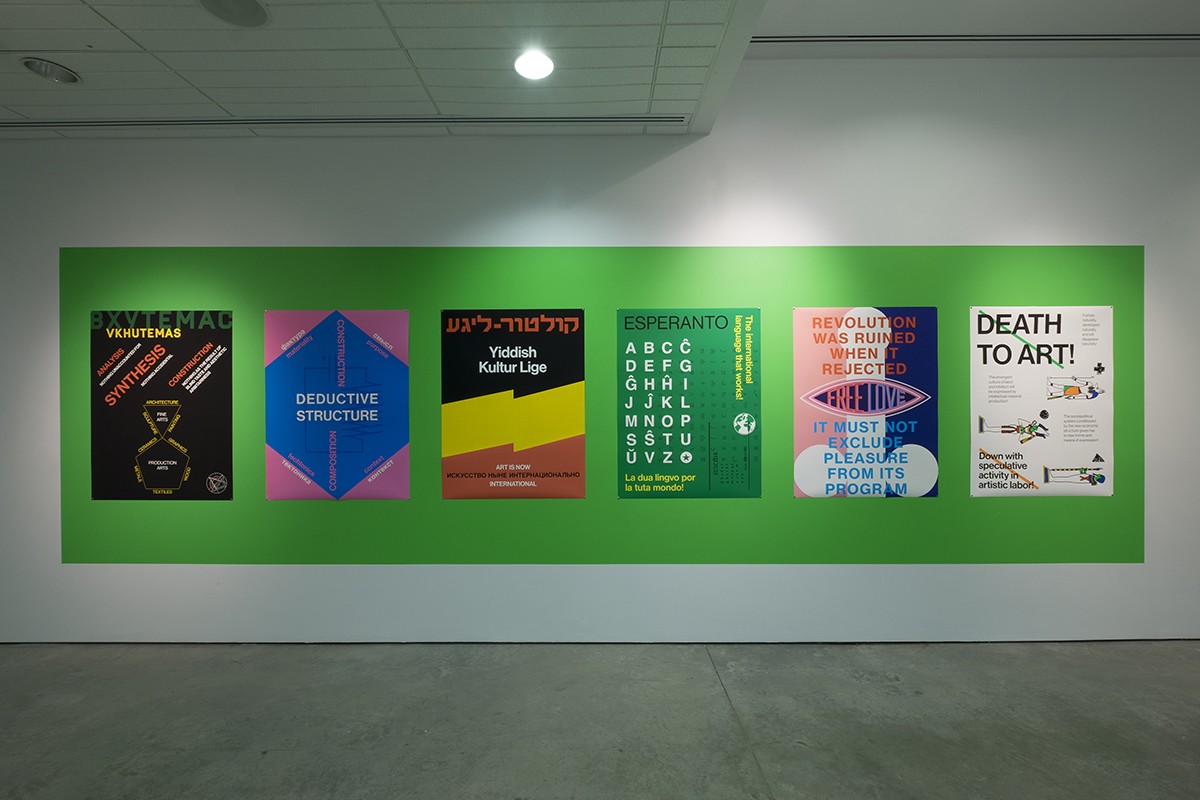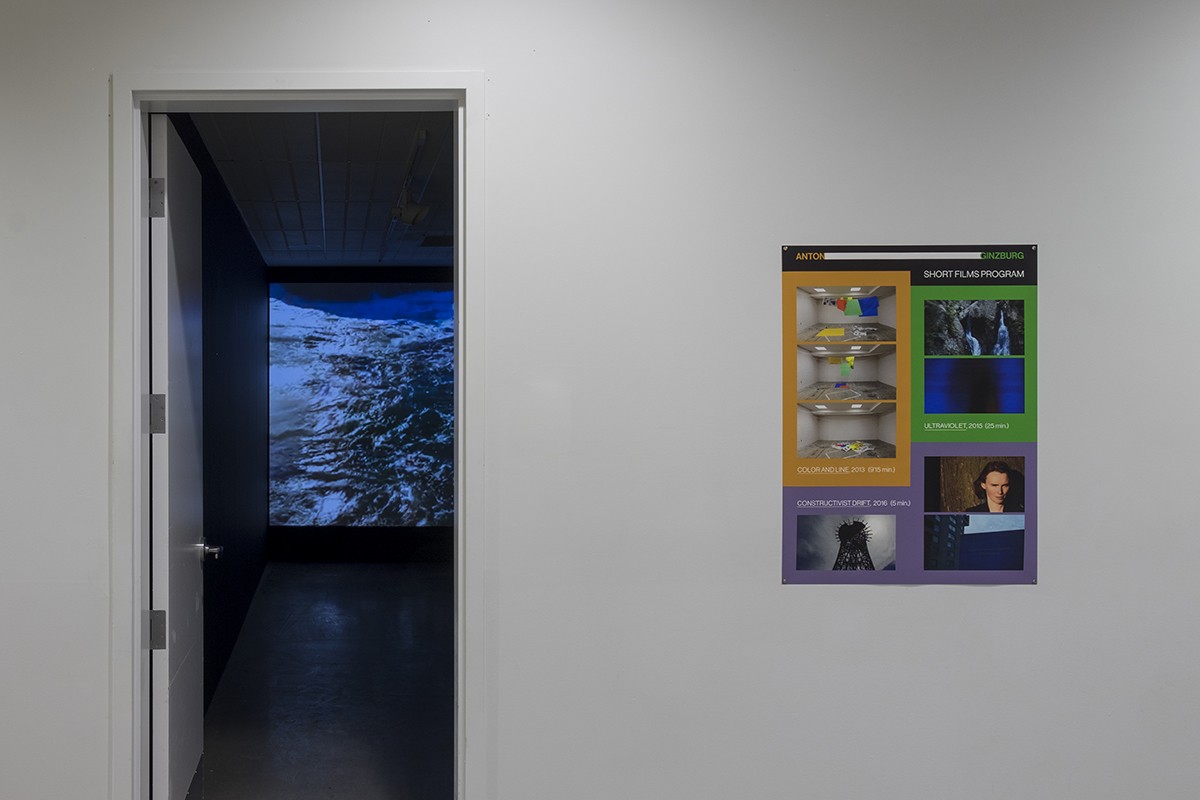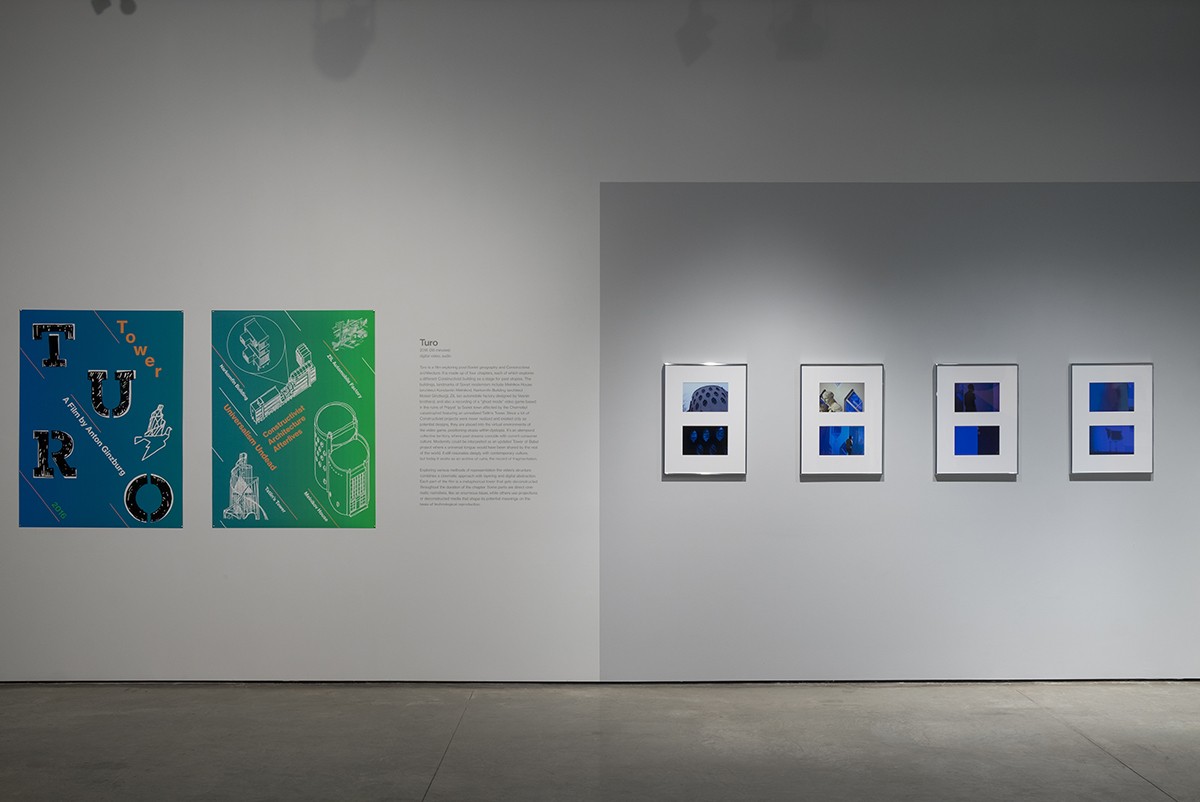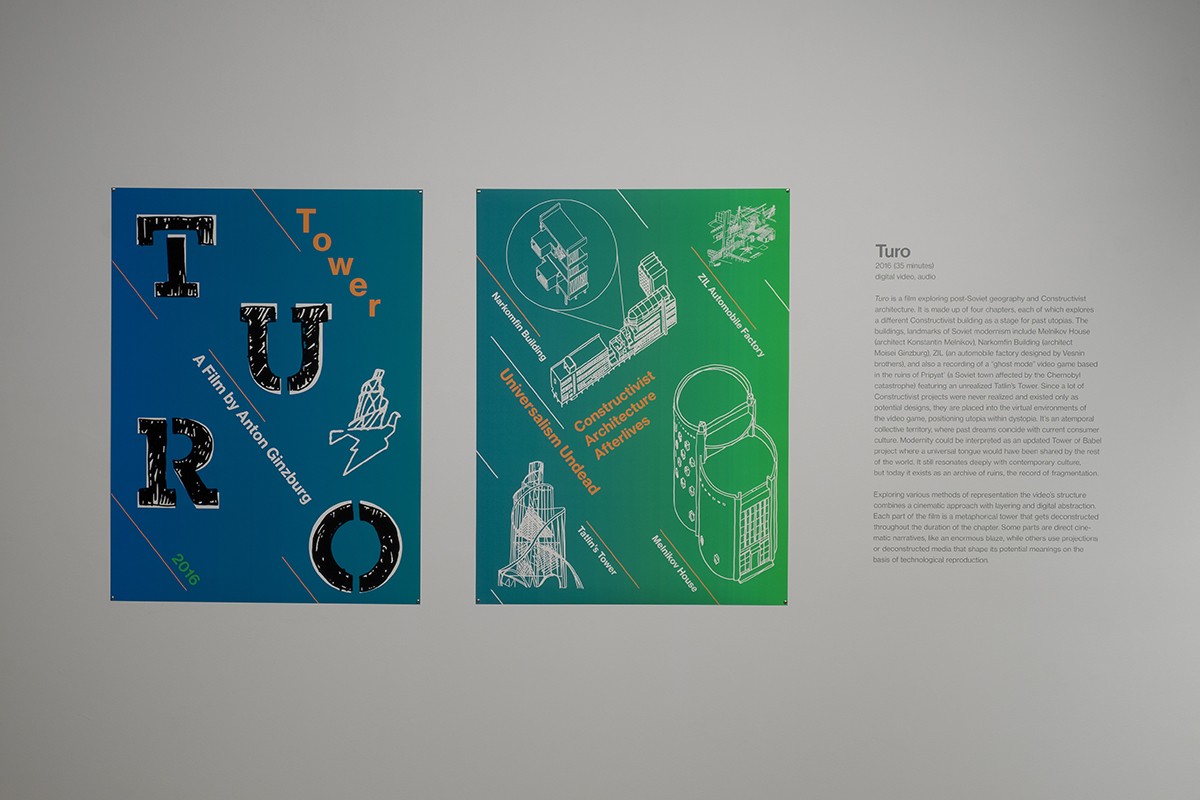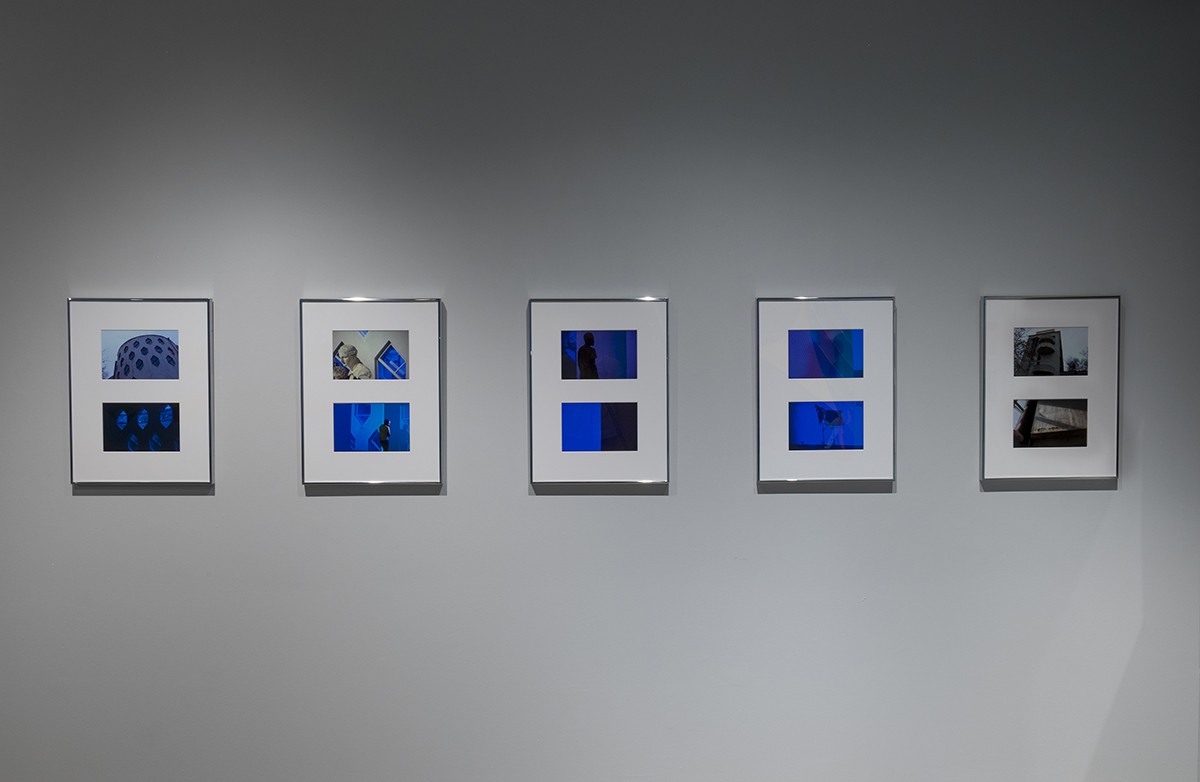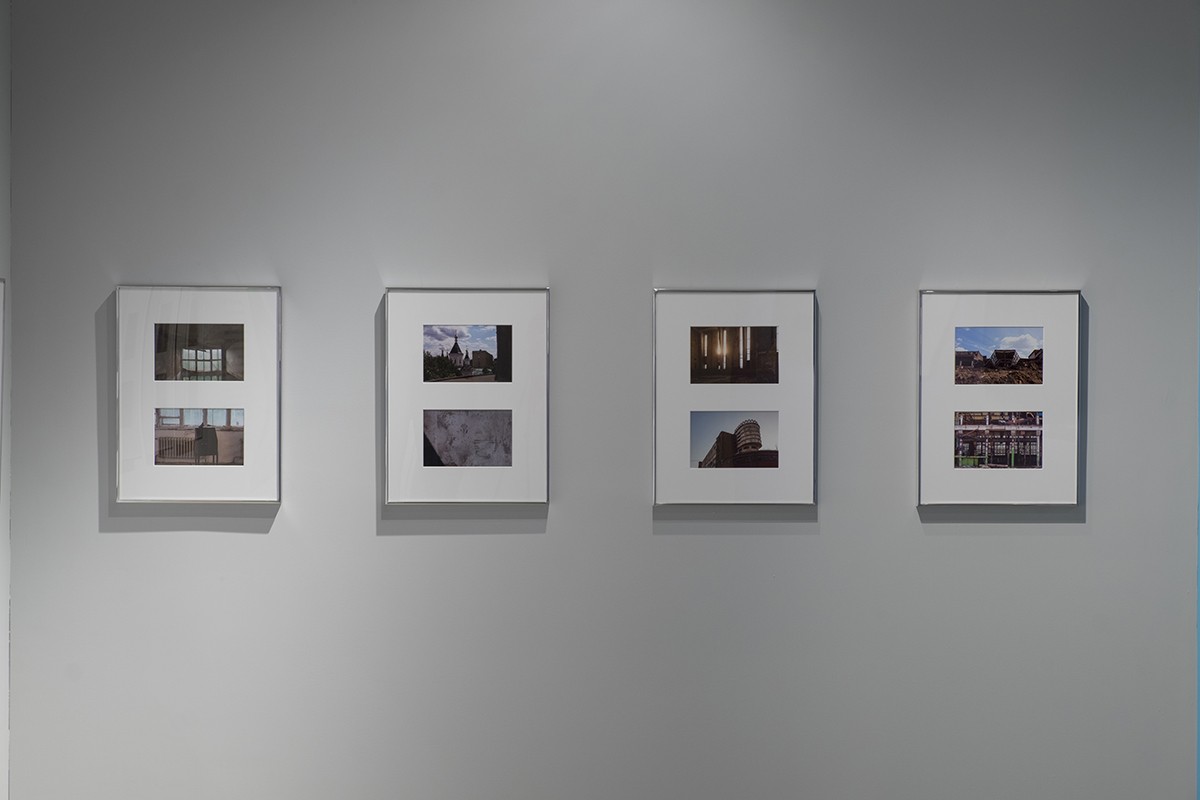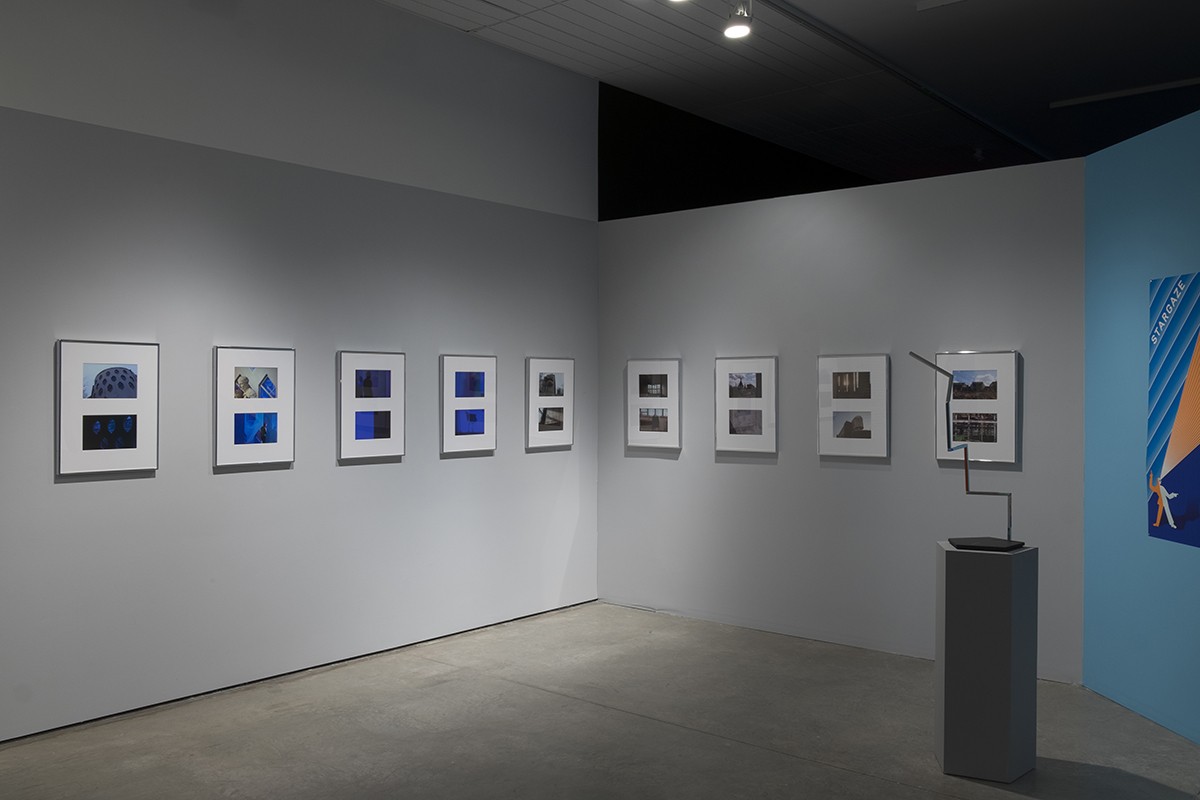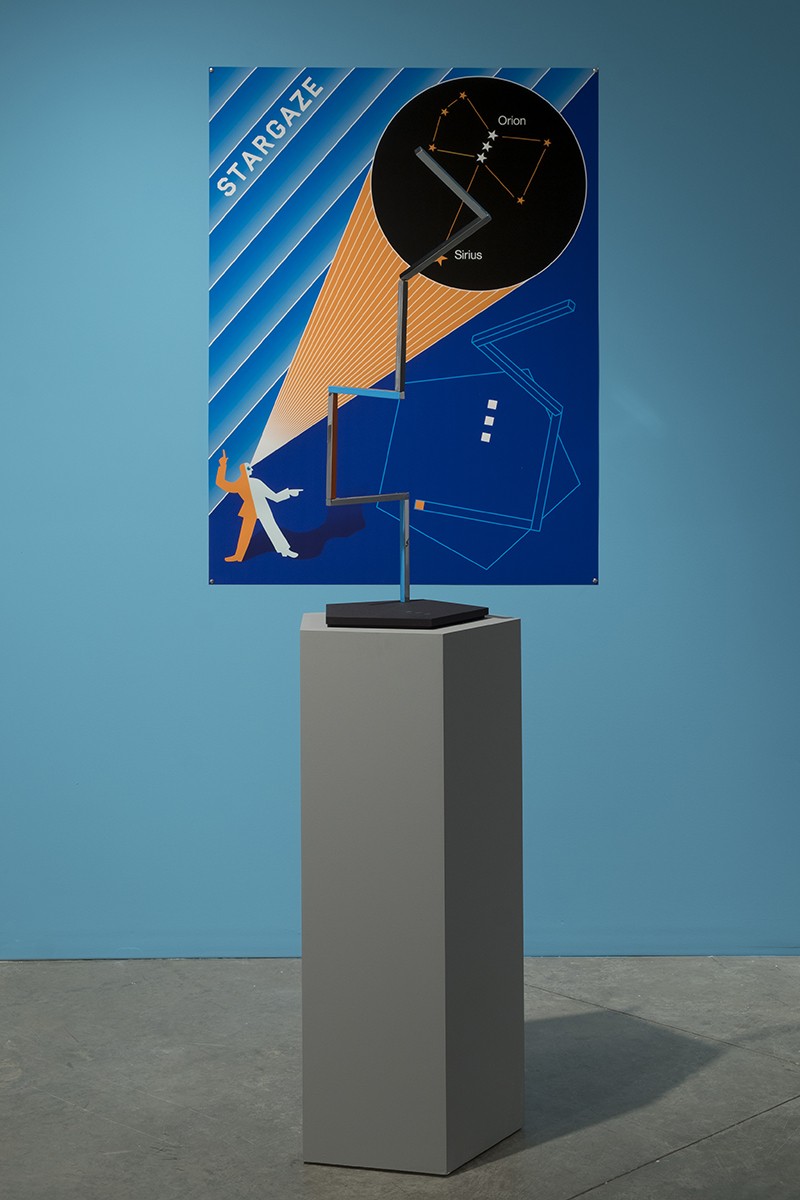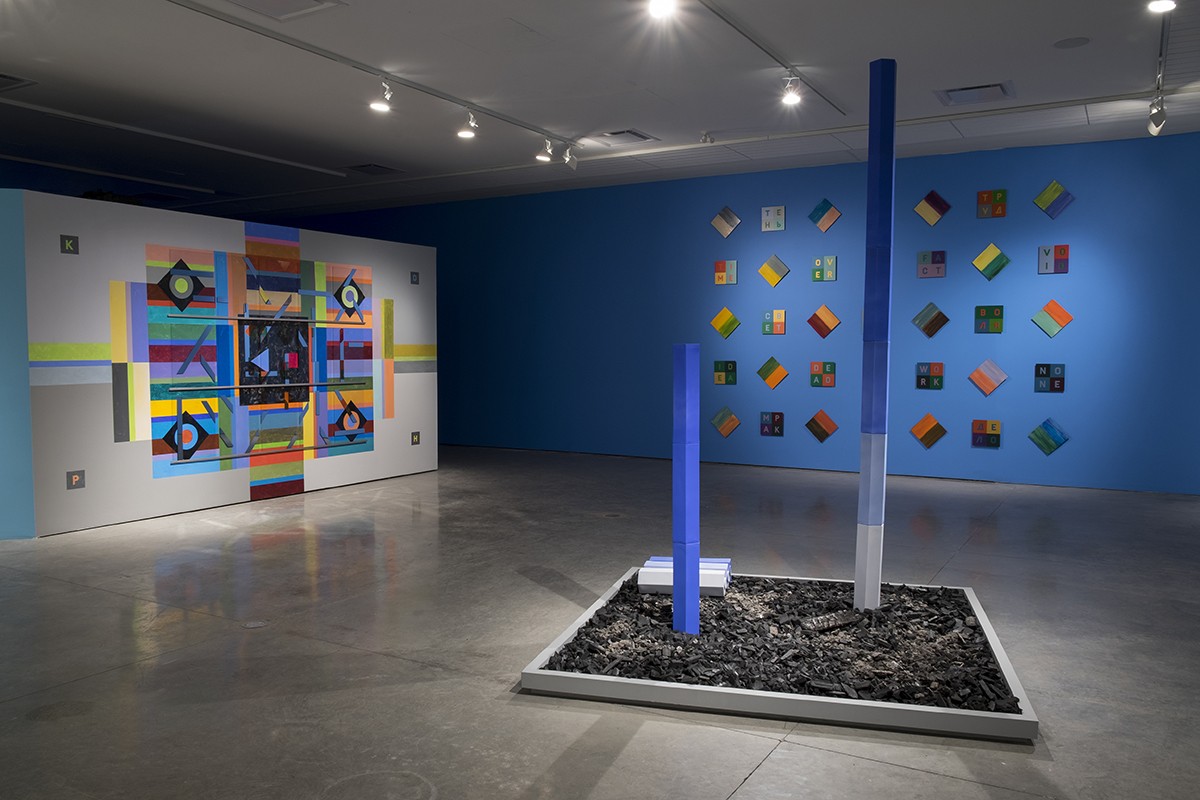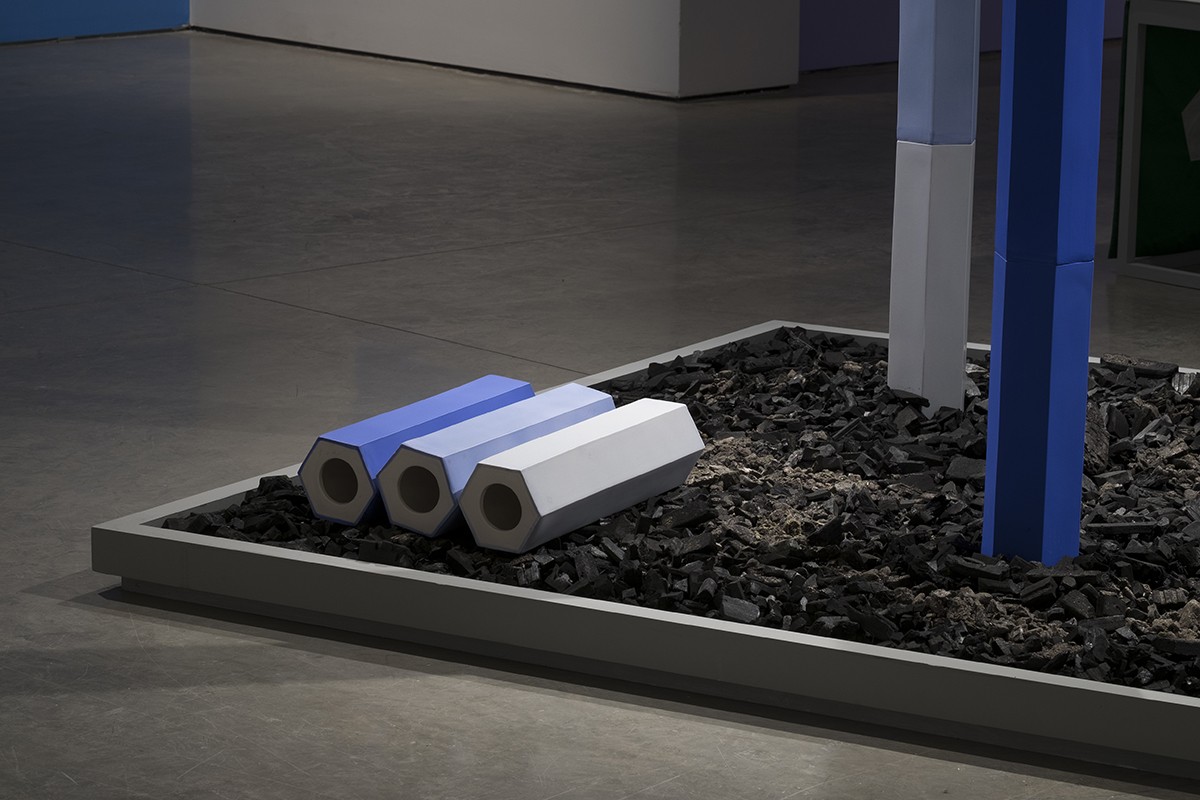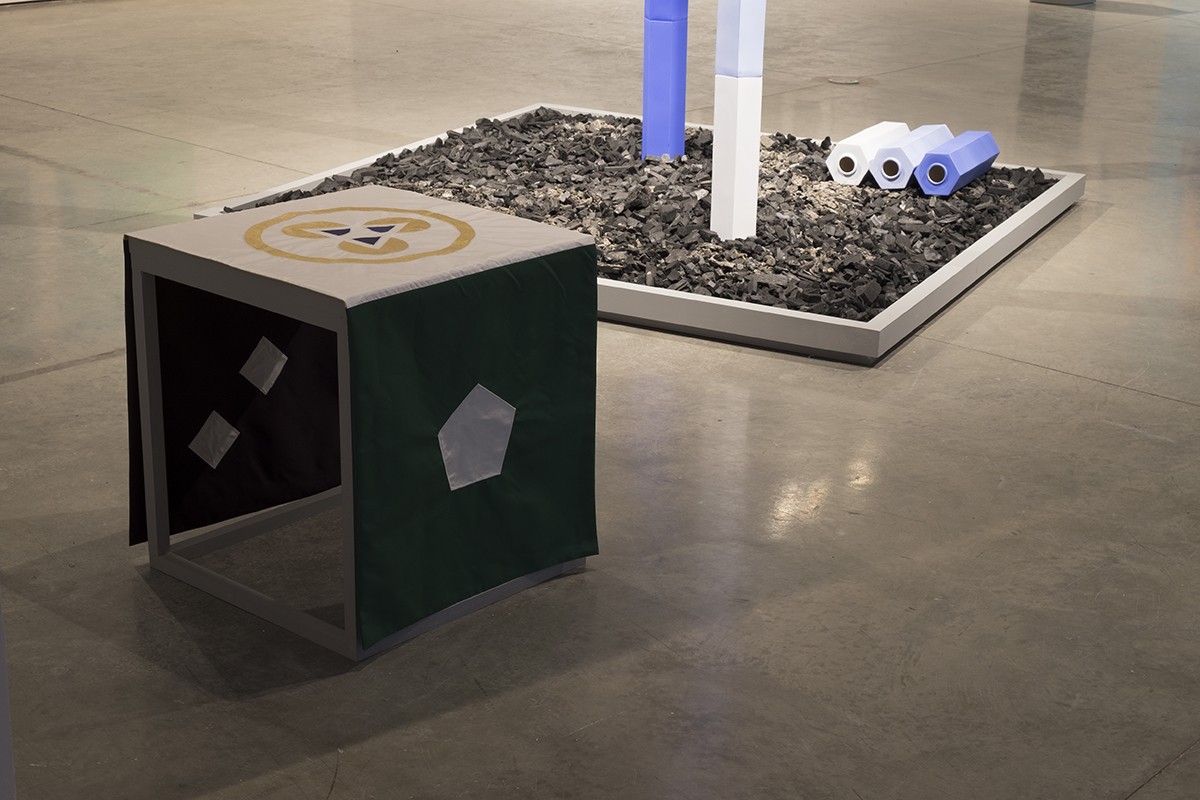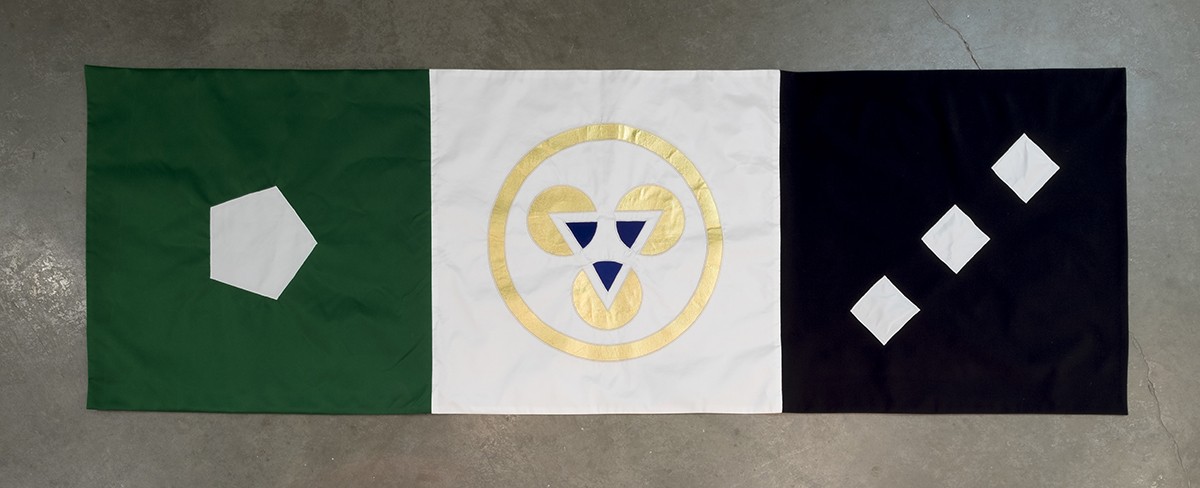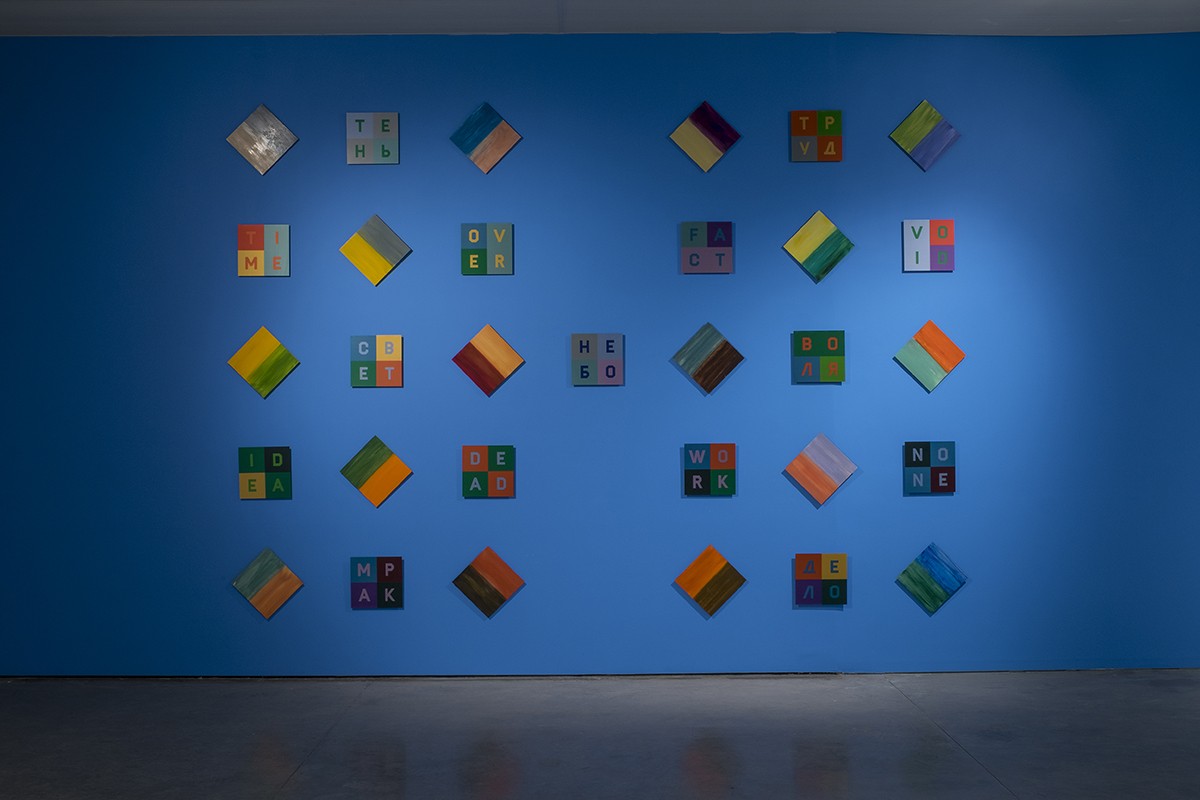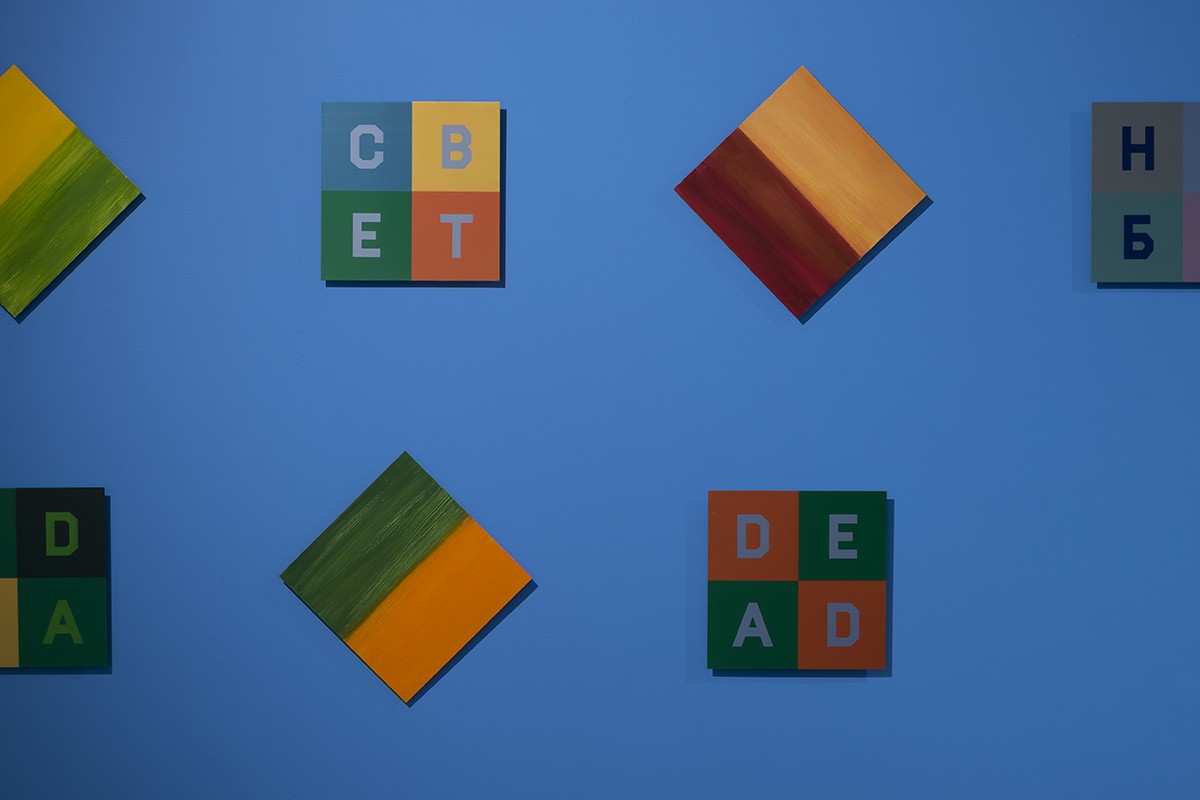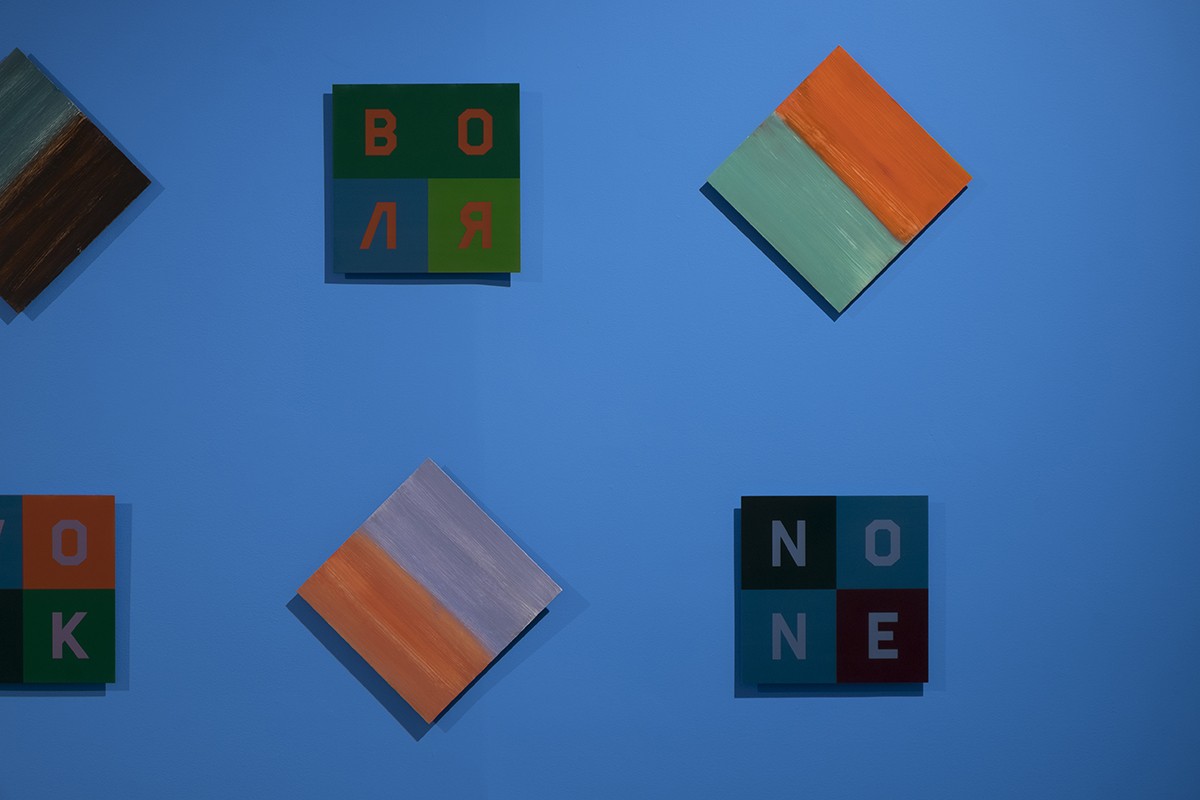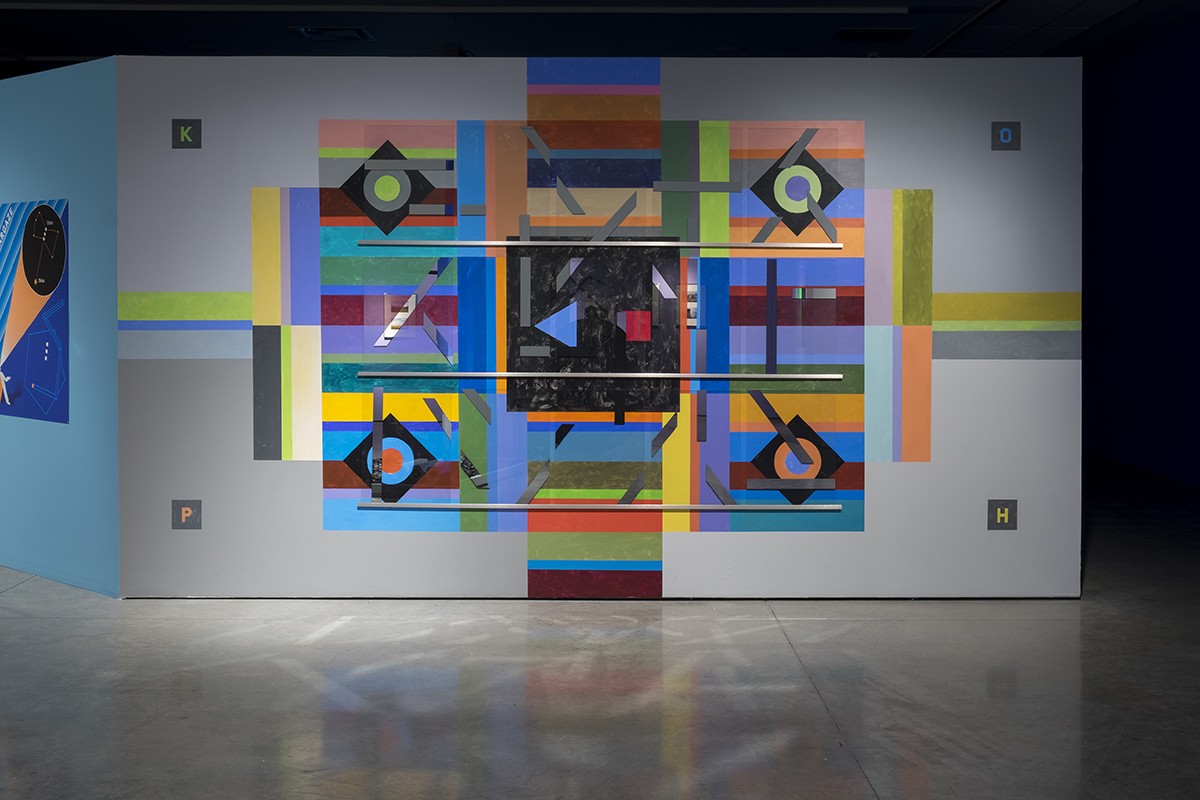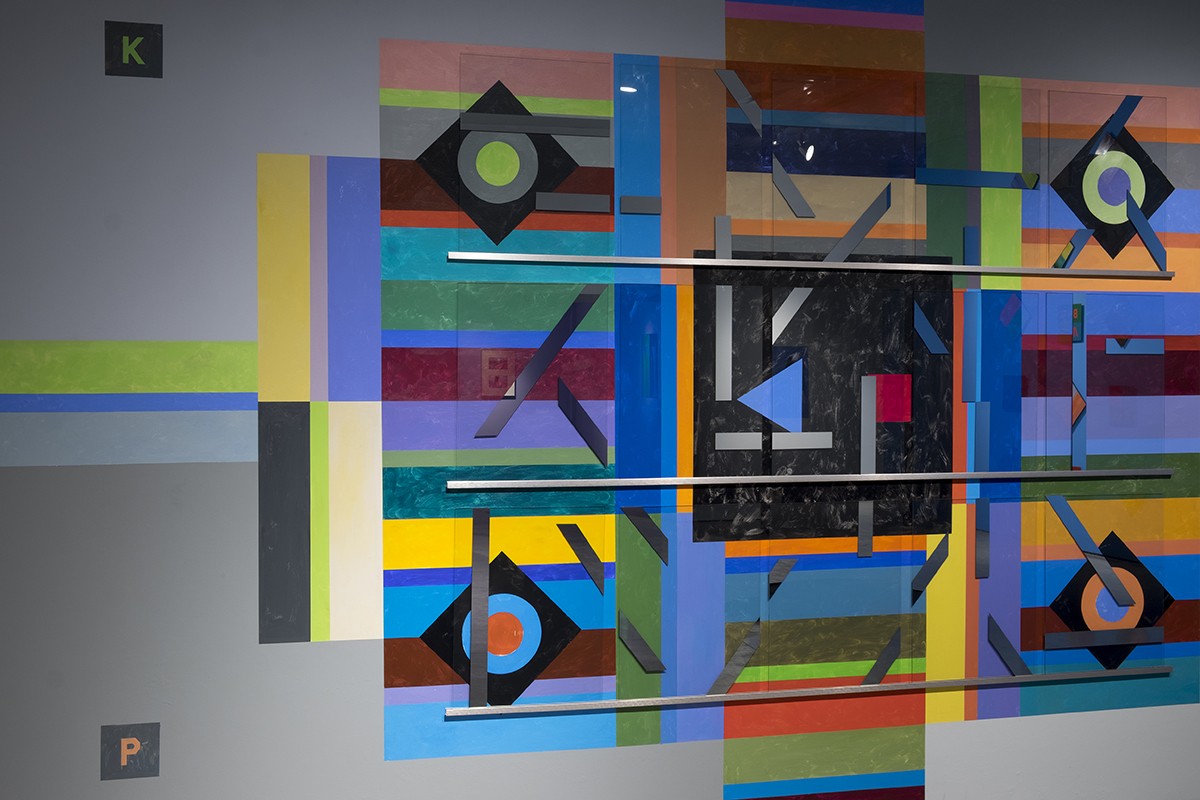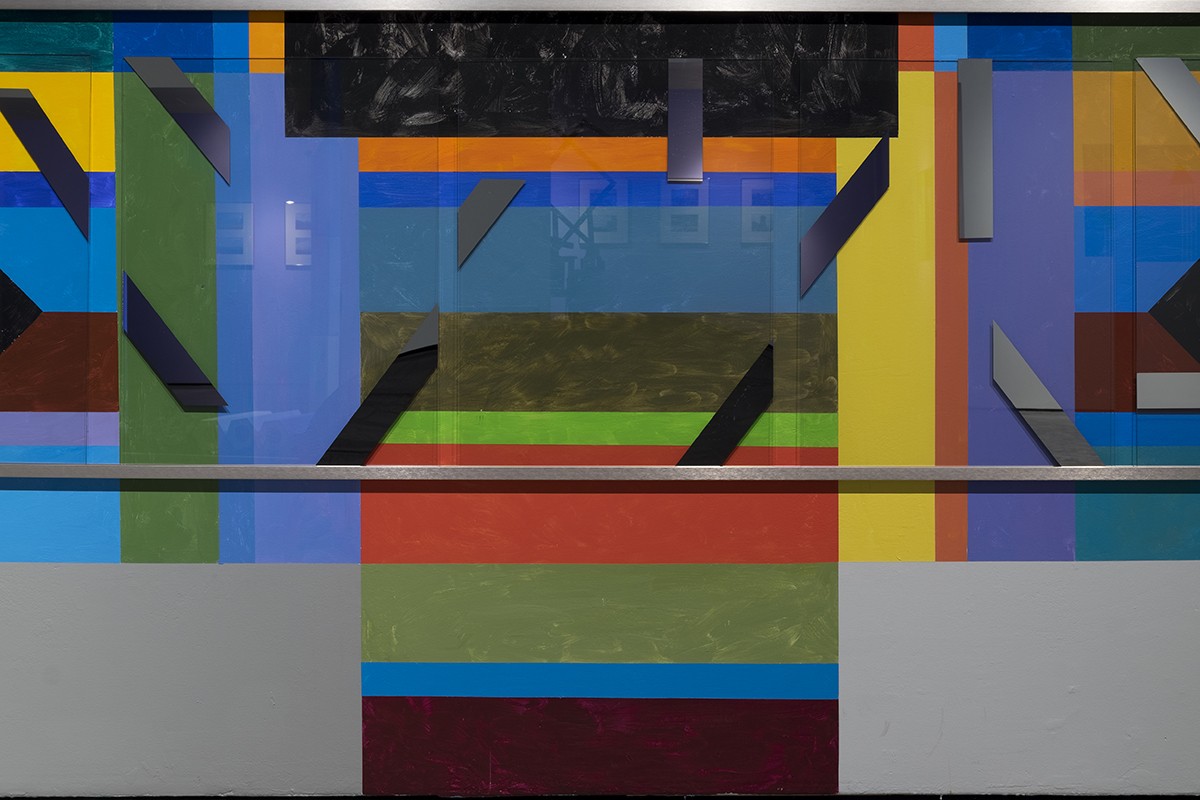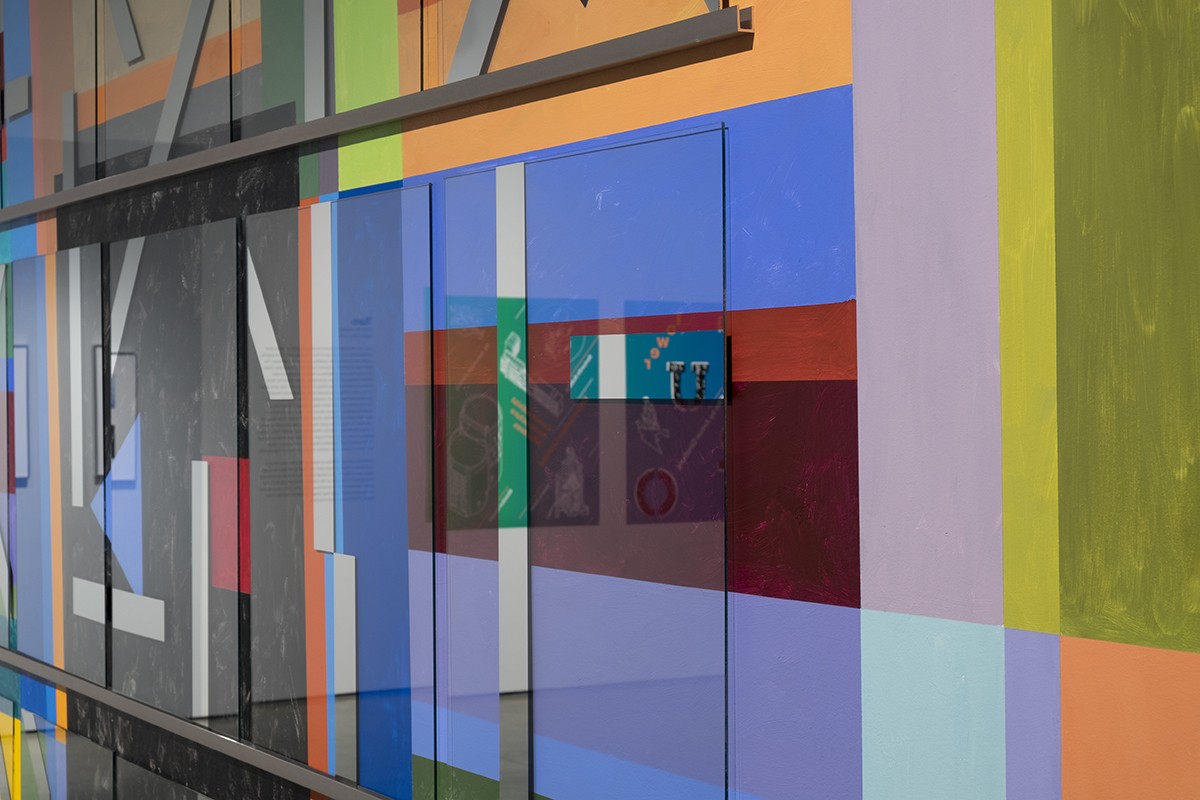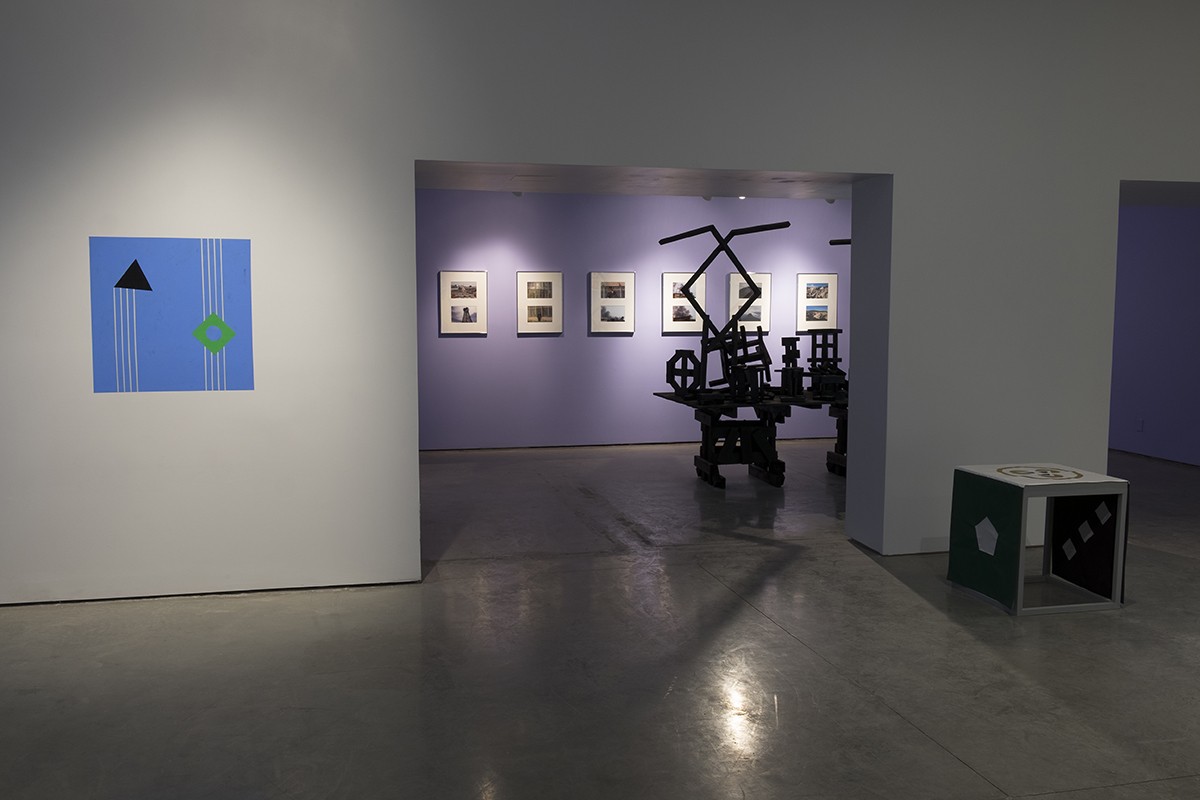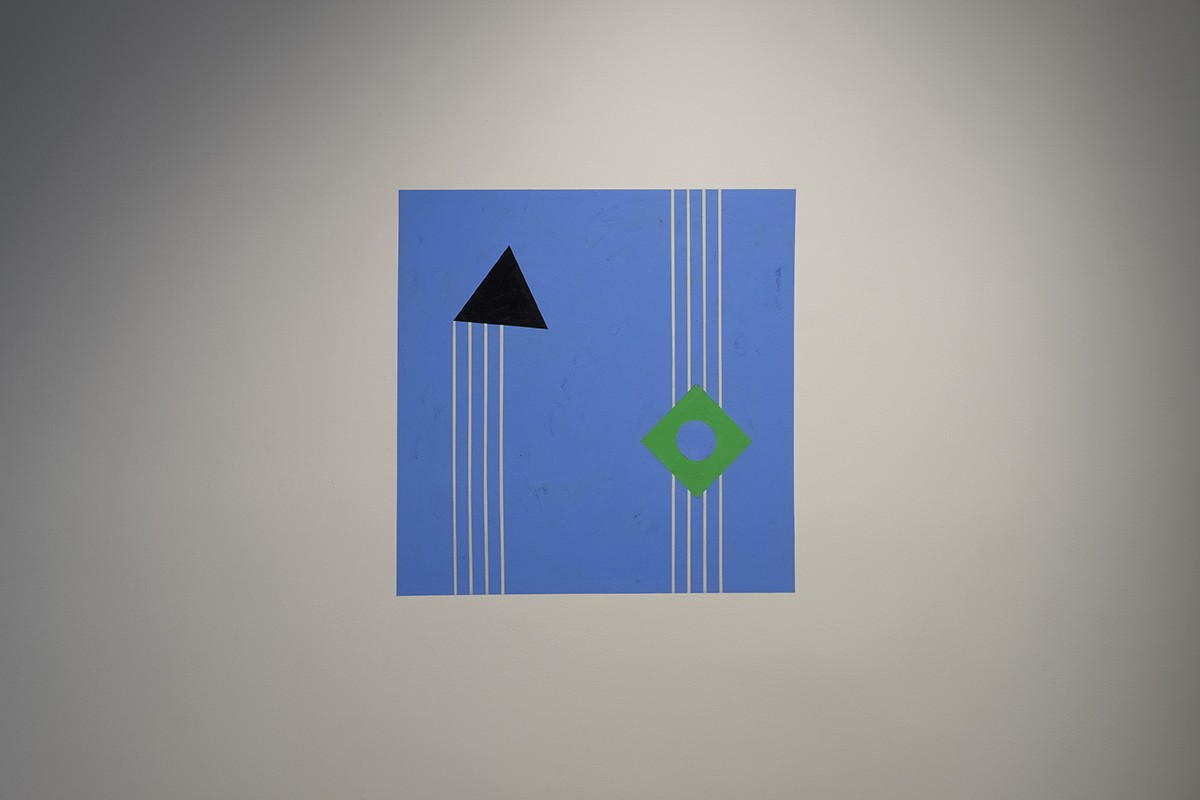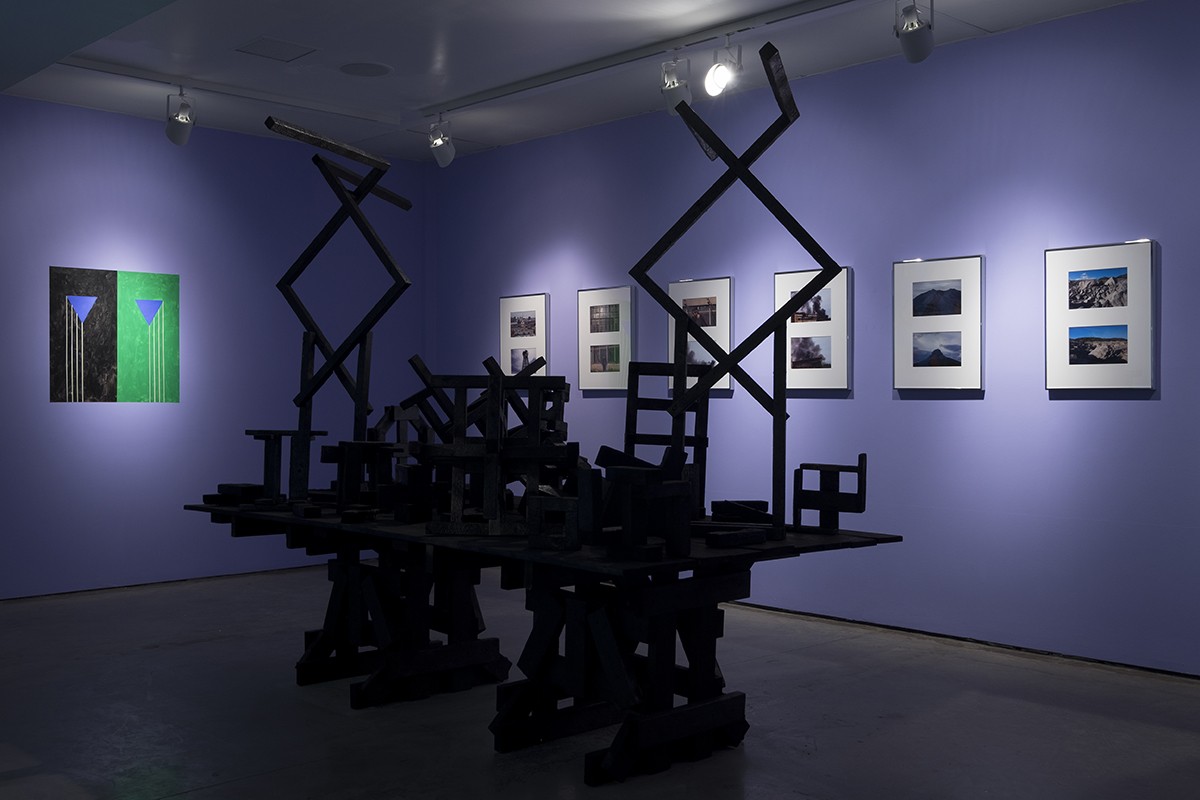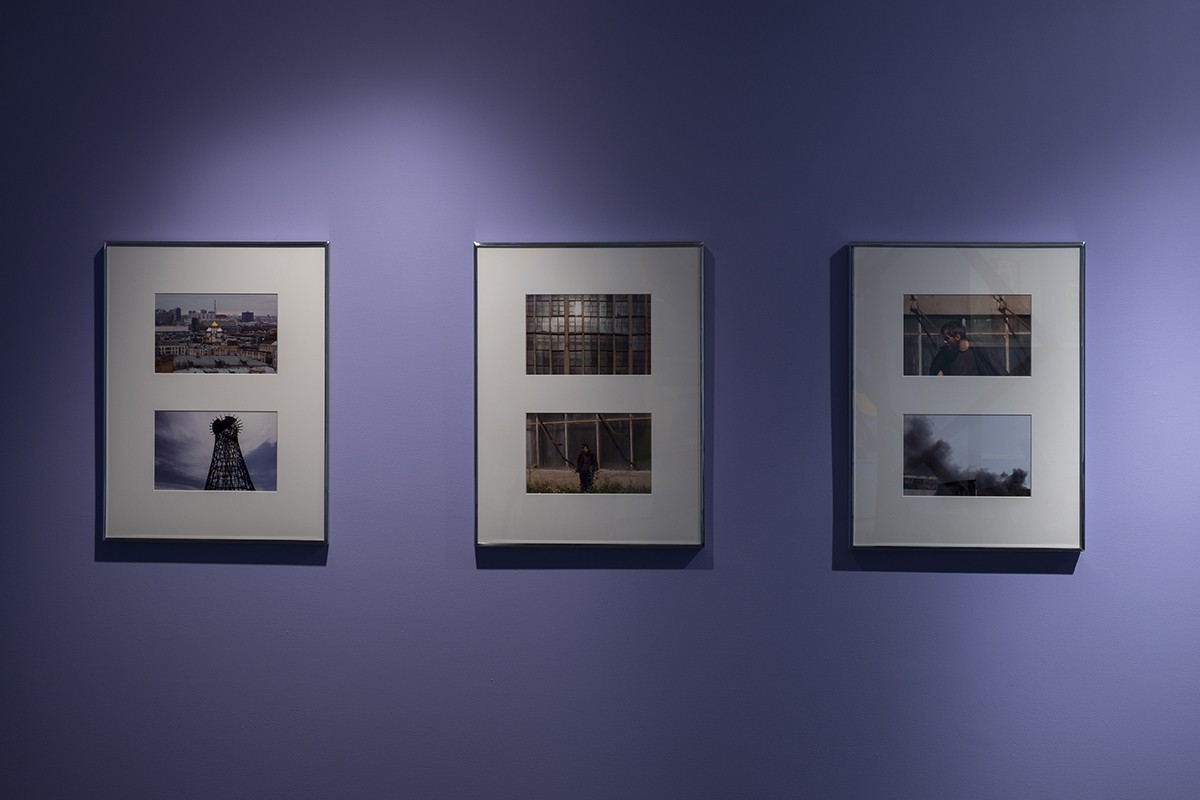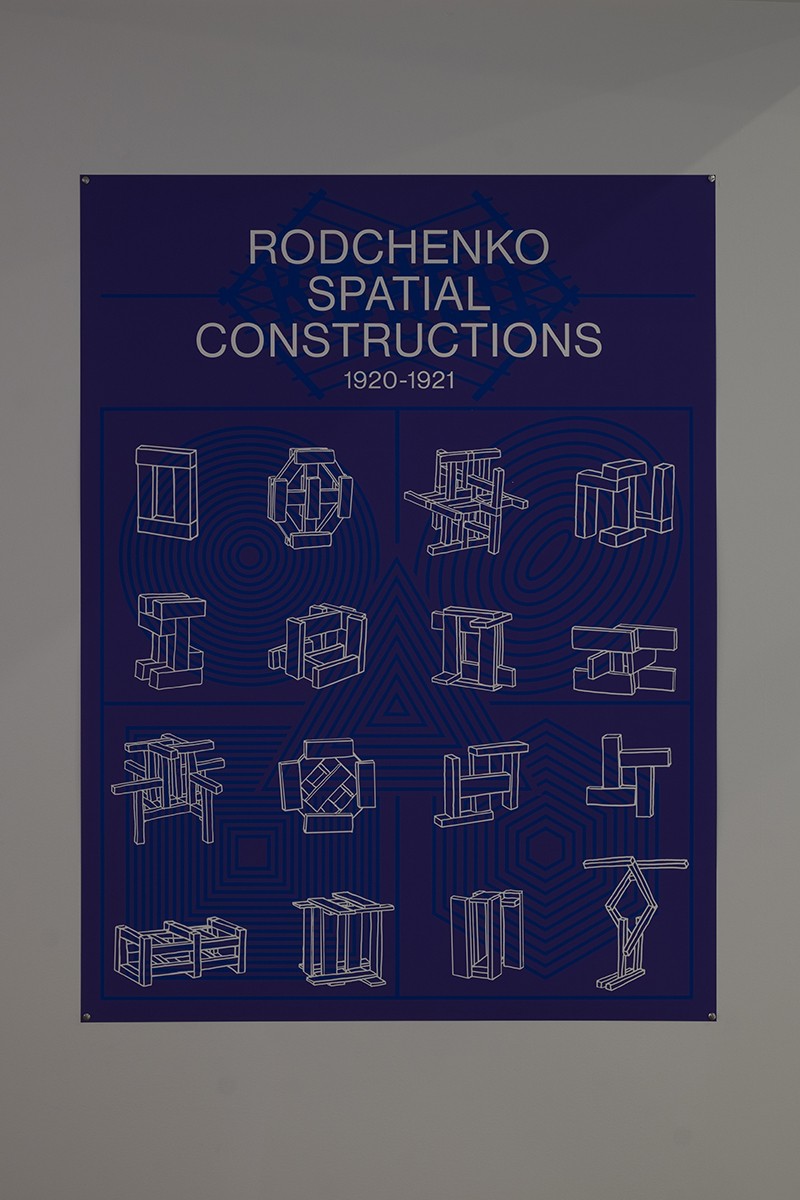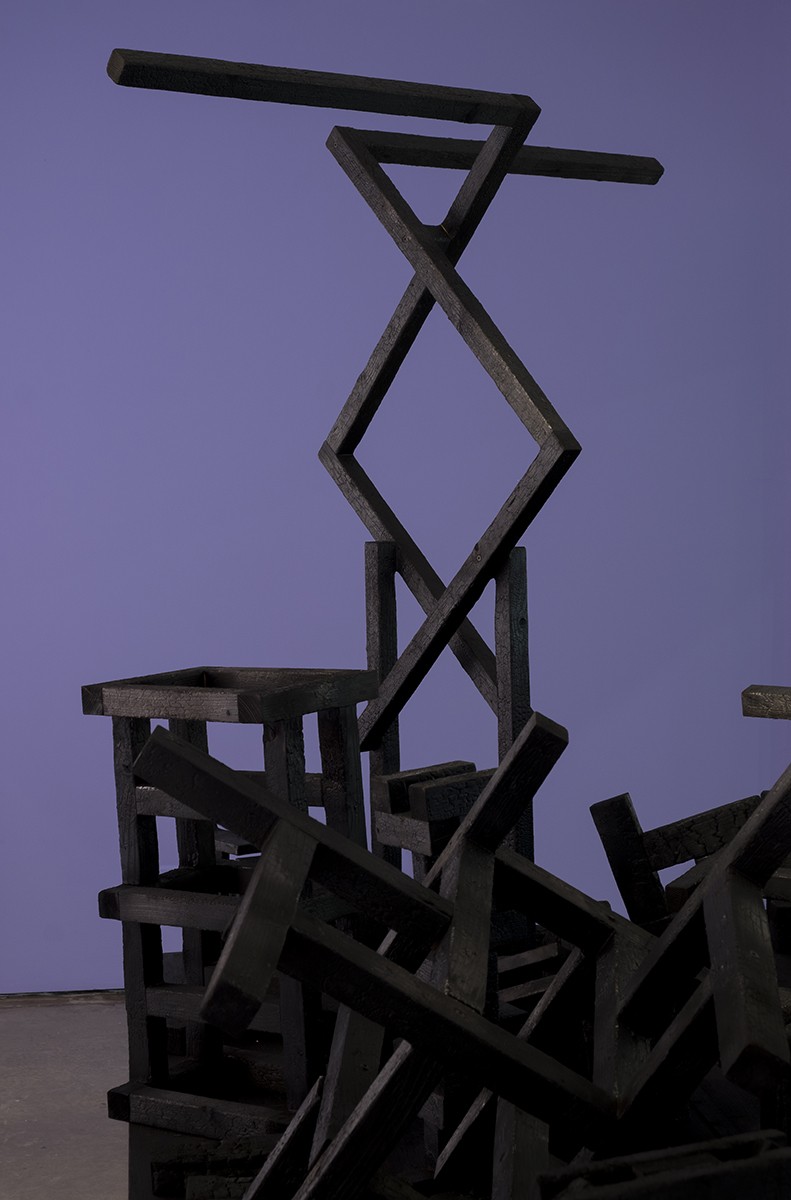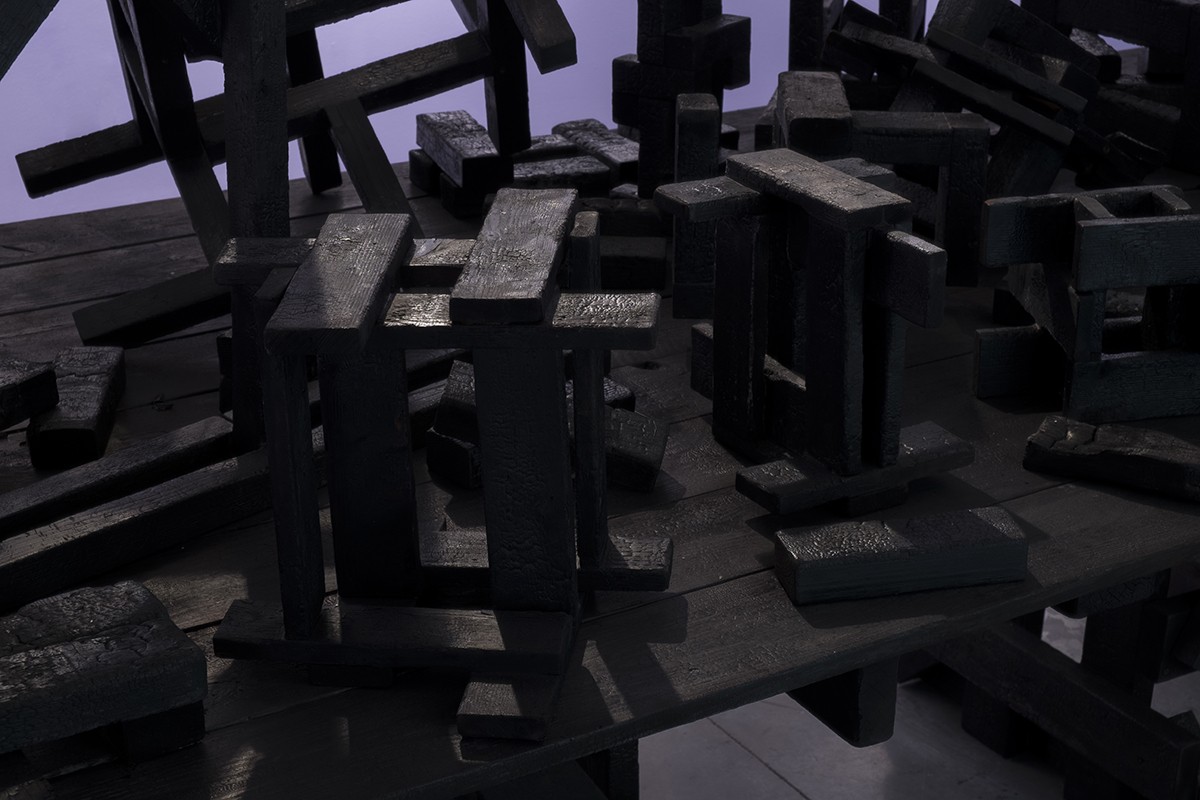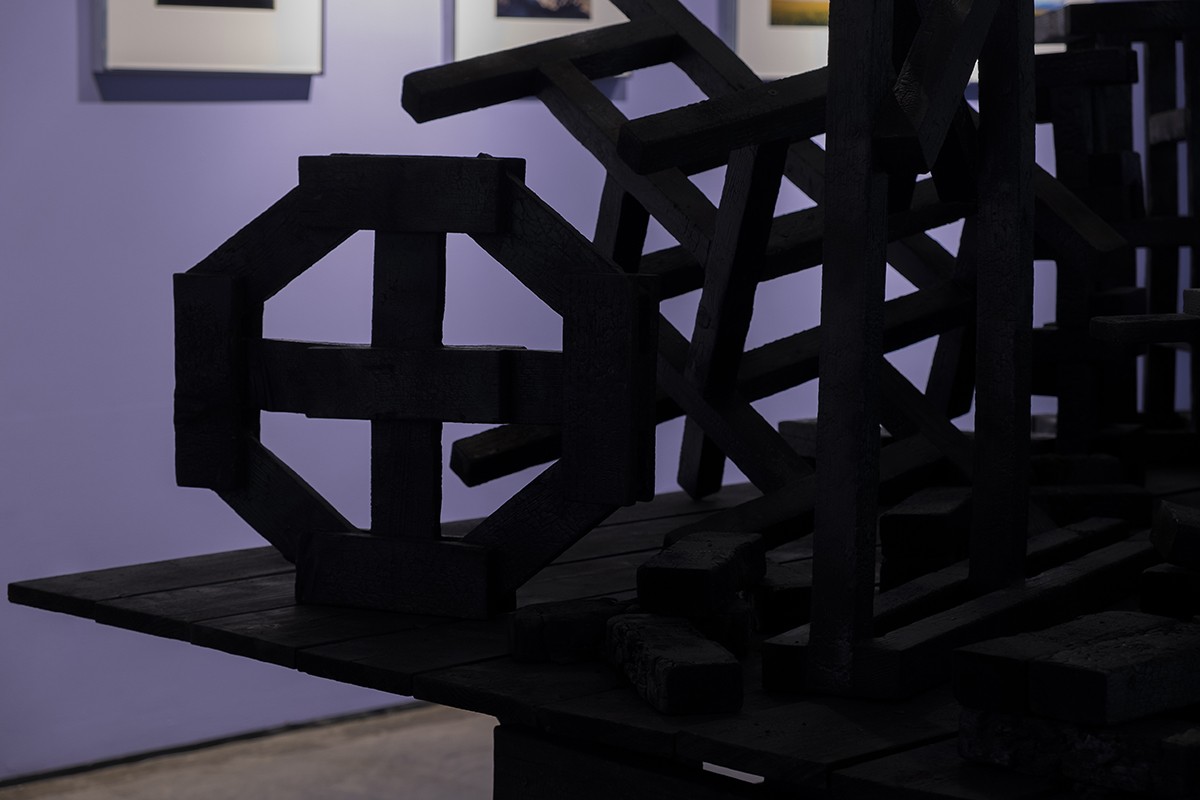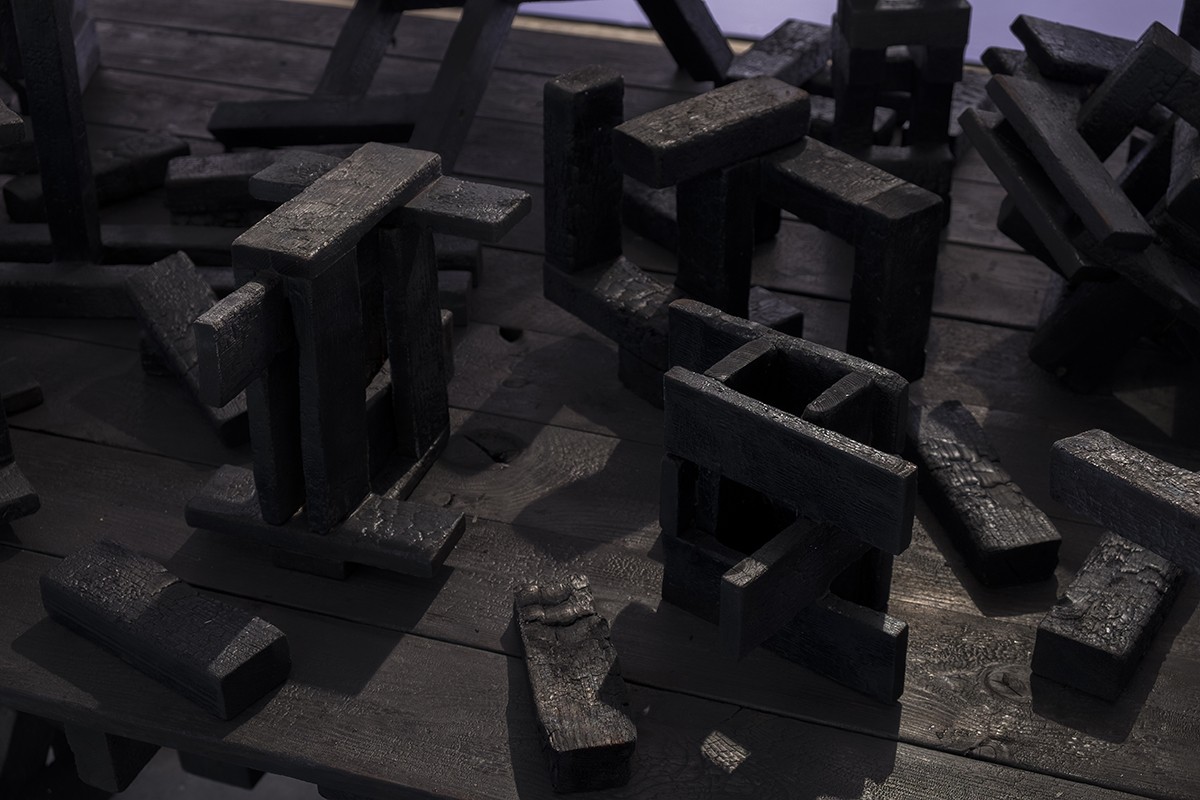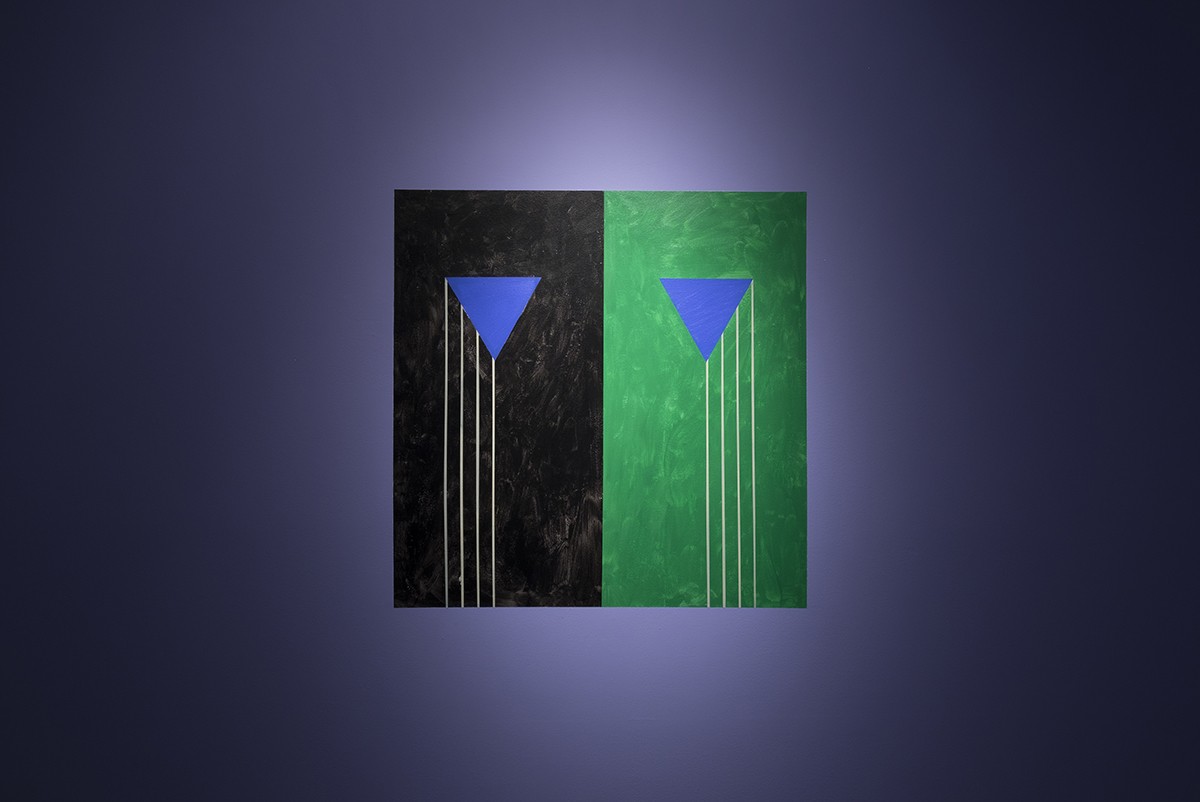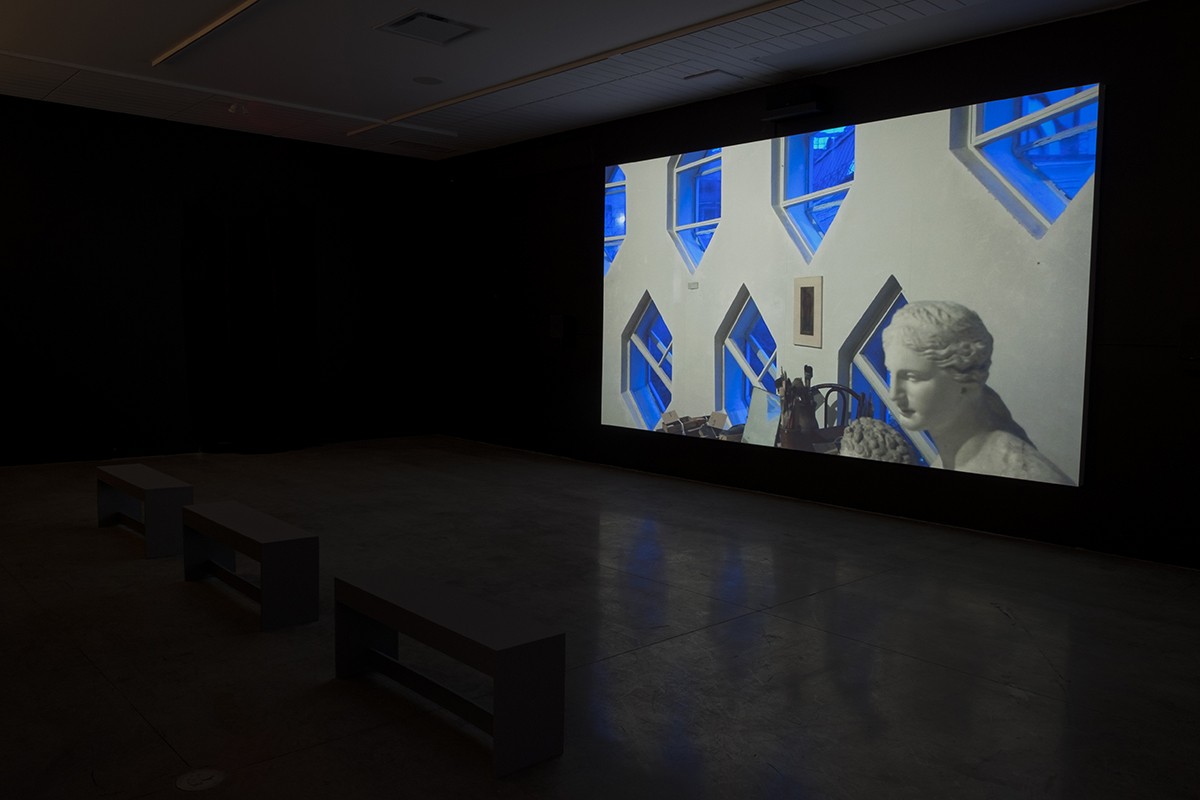Blue Flame: Constructions and Initiatives
Presented by the Southern Alberta Art Gallery / December 3, 2016 to February 5, 2017
Anton Ginzburg, a New York-based artist, born in the USSR, presents a new body of work titled Blue Flame: Constructions and Initiatives. The exhibition explores the collapse of the modern universalist project. Visitors encounter a series of artistic investigations recalling Constructivist pedagogical experiments combined with the artist’s personal mythologies. It culminates in Turo(Tower in Esperanto), a film exploring post-Soviet geography and Constructivist architecture. Modernity is interpreted as an updated Tower of Babel project that exists as an archive of ruins. Exploring various methods of representation, the video’s structure combines cinematic narrative, videogame footage, and digital abstraction.Throughout the 1920s, VKhUTEMAS (the Soviet equivalent of Bauhaus) spawned the influential art movements Constructivism and Suprematism led by faculty that included Kazimir Malevich, Lyubov Popova, and Alexander Rodchenko, among others, whose pedagogical experiments, or ‘initiatives,’ reflected the school’s mandate to merge progressive politics and technical innovation within the universalist, modernist project. In a summer residency among the mountains of southern Alberta, Ginzburg engaged in visual exercises, including colour and spatial studies, photography, and graphic explorations, reanimating avant-garde methodology into a present day North American context. In a playful if destructive gesture, the artist burned spatial studies, summoning the aura of the interrupted avant-garde experiment.
The deconstructive gesture is echoed in Ginzburg’s new film Turo – the third installment of his trilogy preceded by Hyperborea and Walking the Sea. In Turo, three modernist buildings are explored as stages for past utopias along with a recording of a “ghost mode” video game based in the ruins of Pripyat (site of Chernobyl catastrophe) and featuring Tatlin’s unrealized tower. The artist employs Esperanto – a language devised as an international medium of communication – to guide the viewer through each chapter of this “fictionalized non-fiction.”

